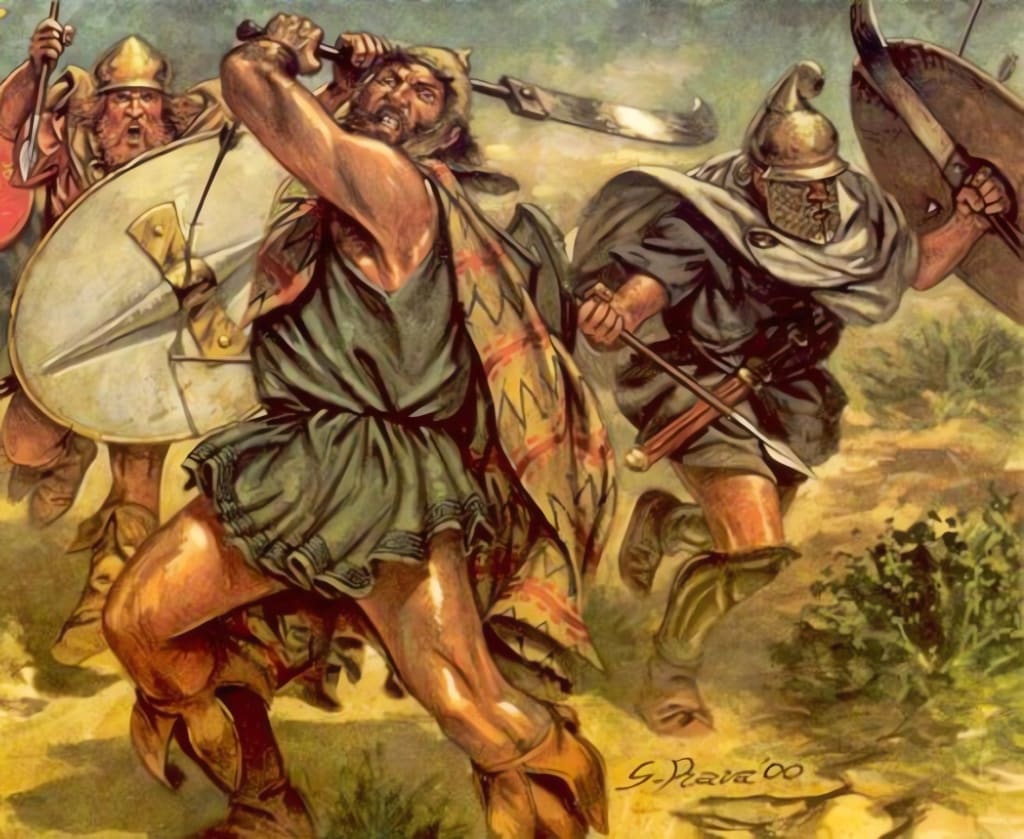The Thracians
The Fearsome Warriors of the Balkans

Thrace, a region situated in Southeast Europe, holds significant geographical and historical importance. It is demarcated by the Balkan Mountains in the north, the Aegean Sea in the south, and the Black Sea in the east. Presently, Thrace encompasses southeastern Bulgaria (known as Northern Thrace), northeastern Greece (referred to as Western Thrace), and the European portion of Turkey (known as East Thrace). This region roughly corresponds to the ancient Roman Province of Thrace. Furthermore, the lands once inhabited by the ancient Thracians extended northwards to encompass modern-day Northern Bulgaria and Romania, and westwards into Macedonia. The term "Thrace" originates from the ancient Greek word "Thrake" and initially denoted the Thracians, an ancient population residing in Southeast Europe. The term "Europe," derived from the ancient Greek word "Εὐρώπη," also initially referred to this particular region before its meaning expanded to encompass its contemporary definition. The designation of the region may have been influenced by the principal river in the area, Hebros, which could potentially derive from the Indo-European term "arg," signifying a "white river" (in contrast to the Vardar River, meaning a "black river"). Alternatively, according to an alternative hypothesis, Hebros may have originated from the Thracian word for "goat."
In Turkey, the region is commonly known as Rumeli, which translates to "Land of the Romans." This name was traditionally used by Turkic societies to refer to the Byzantine Empire and Orthodox Christians. The indigenous population of Thrace, known as the Thracians, were organized into various tribes. The initial external power to exert significant influence over Thrace, either partially or entirely, were the Achaemenian Persians in the late 6th century BC. Following the Scythian campaign led by Darius the Great, the region was incorporated into the Persian empire as the Satrapy of Skudra. Thracian soldiers were enlisted in Persian armies and can be observed in carvings at Persepolis and Naqsh-e Rostam. The Persians maintained a presence in Thrace for over a century, until the conquests of Alexander the Great of Macedon in the 4th century BC. Alexander divided the vast territory among his generals. Notably, Thracian troops accompanied Alexander during his crossing of the Hellespont, which borders Thrace, as part of his invasion of the Persian Empire.
It is worth noting that the Thracians did not have a collective name for themselves; terms such as Thrace and Thracians were assigned by the Greeks. The Thracians, initially divided into distinct tribes, lacked any enduring political organizations until the establishment of the Odrysian state in the 4th century BC. Similar to the Illyrians, the Thracian tribes residing in mountainous regions adhered to a warrior tradition, while those inhabiting the plains were reputedly more inclined towards peaceful pursuits. Recent discoveries of burial mounds in Bulgaria indicate that Thracian kings did exercise authority over specific regions of Thrace, fostering a distinct Thracian national identity.
During this era, a subculture of celibate ascetics known as the Ctistae thrived in Thrace, fulfilling roles as philosophers, priests, and prophets.
Certain areas of Thrace, particularly in the southern regions, began to undergo Hellenization prior to the Peloponnesian War, as Athenian and Ionian colonies were established in Thrace preceding the conflict. Subsequently, Spartan and other Doric colonists followed suit. The significant interest of Athens in Thrace is underscored by the abundant discoveries of Athenian silverware in Thracian tombs. In 168 BC, following the Third Macedonian War and the subjugation of Macedonia by the Romans, Thrace also lost its independence and became subject to Roman tribute. Towards the conclusion of the 1st century BC, Thrace relinquished its status as a client kingdom, as the Romans began directly appointing their own kings. This state of affairs persisted until 46 AD, when the Romans ultimately transformed Thrace into a Roman province, known as Romana provincia Thracia. During the period of Roman domination within the geographical boundaries of ancient Thrace, two distinct Roman provinces existed, namely Thrace ("provincia Thracia") and Lower Moesia ("Moesia inferior"). Subsequently, during the times of Diocletian, these two provinces were amalgamated to form the "Dioecesis Thracia". The urbanization of the region was facilitated by the establishment of Roman colonies and several Greek cities, such as Nicopolis, Topeiros, Traianoupolis, Plotinoupolis, and Hadrianoupolis. The Roman provincial policy in Thrace favored Hellenization over Romanization, which had already begun during the Archaic period through Greek colonization and was completed by the end of Roman antiquity. The high rate of Greek inscriptions in Thrace, extending south of the Haemus Mountains, is indicative of the complete Hellenization of the region. The boundaries between the Greek and Latin speaking Thrace are located just above the northern foothills of the Haemus Mountains.
During the imperial period, many Thracians, particularly members of the local aristocracy of the cities, were granted the right of Roman citizenship (civitas Romana) with all its privileges. Epigraphic evidence indicates a significant increase in such naturalizations during the times of Trajan and Hadrian. In 212 AD, the emperor Caracalla granted Roman citizenship to all free inhabitants of the Roman Empire through his well-known decree (constitutio Antoniniana). During the same period (1st-2nd century AD), a notable presence of Thracians is attested by inscriptions outside the borders (extra fines) both in the Greek territory and in all the Roman provinces, especially in the provinces of the Eastern Roman Empire. During the mid-5th century, Thracia, a region under the authority of the Western Roman Empire, was subjected to the rule of Germanic tribal leaders as the Western Roman Empire began to disintegrate. Consequently, Thracia became a contested territory for the majority of the ensuing millennium. The Byzantine Empire, which emerged as the surviving eastern portion of the Roman Empire in the Balkans, maintained control over Thrace until the 7th century, when the northern half of the region was incorporated into the First Bulgarian Empire, and the remaining portion was restructured as the Thracian theme. The Empire regained control of the lost territories in the late 10th century, only to lose the northern half to the Bulgarians at the end of the 12th century. Throughout the 13th century and the first half of the 14th century, the region was subject to alternating control by the Bulgarian and Byzantine Empires, with the exception of Constantinople. In 1265, the area was subjected to a Mongol raid by the Golden Horde, led by Nogai Khan, and between 1305 and 1307, it was raided by the Catalan company. In the year 1352, the Ottoman Turks initiated their inaugural military expedition into the region, successfully subjugating it entirely within a span of two decades, subsequently governing it for a period of five centuries marked by relative tranquility. However, in 1821, various territories within Thrace, including Lavara, Maroneia, Sozopolis, Aenos, Callipolis, and Samothraki, rose in rebellion during the Greek War of Independence. The incorporation of Northern Thrace into the semi-autonomous Ottoman province of Eastern Rumelia occurred with the Congress of Berlin in 1878, and subsequently, Eastern Rumelia united with Bulgaria in 1885. The remaining portion of Thrace was divided among Bulgaria, Turkey, and Greece at the onset of the 20th century, following the Balkan Wars, World War I, and the Greco-Turkish War. In the summer of 1934, a significant number of Jews, estimated to be up to 10,000, were subjected to maltreatment, bereavement, and forced displacement from the region. Between 1934 and 1938, a substantial influx of Muslim immigrants, known as Göçmenler, arrived in East Thrace from Bulgaria and Romania.
Presently, the term Thracian is a geographical designation employed in Bulgaria, Turkey, and Greece.
About the Creator
A História
"Hi. My name is Wellington and I'm a passion for general history. Here, I publish articles on different periods and themes in history, from prehistory to the present day.






Comments
There are no comments for this story
Be the first to respond and start the conversation.